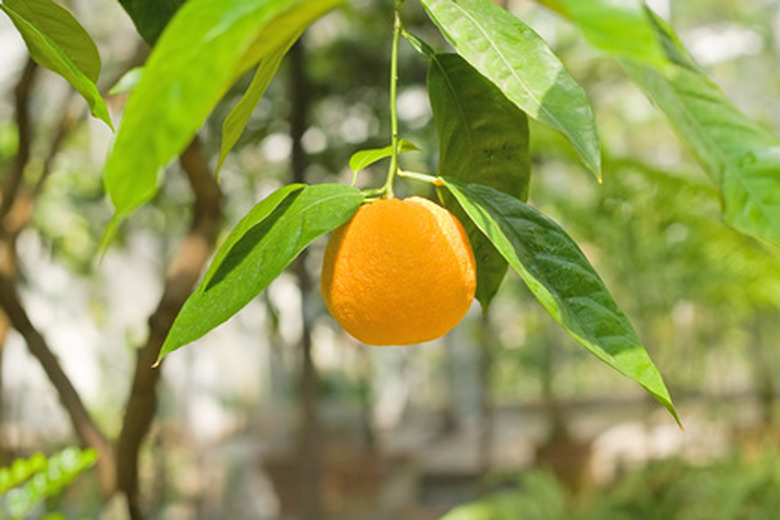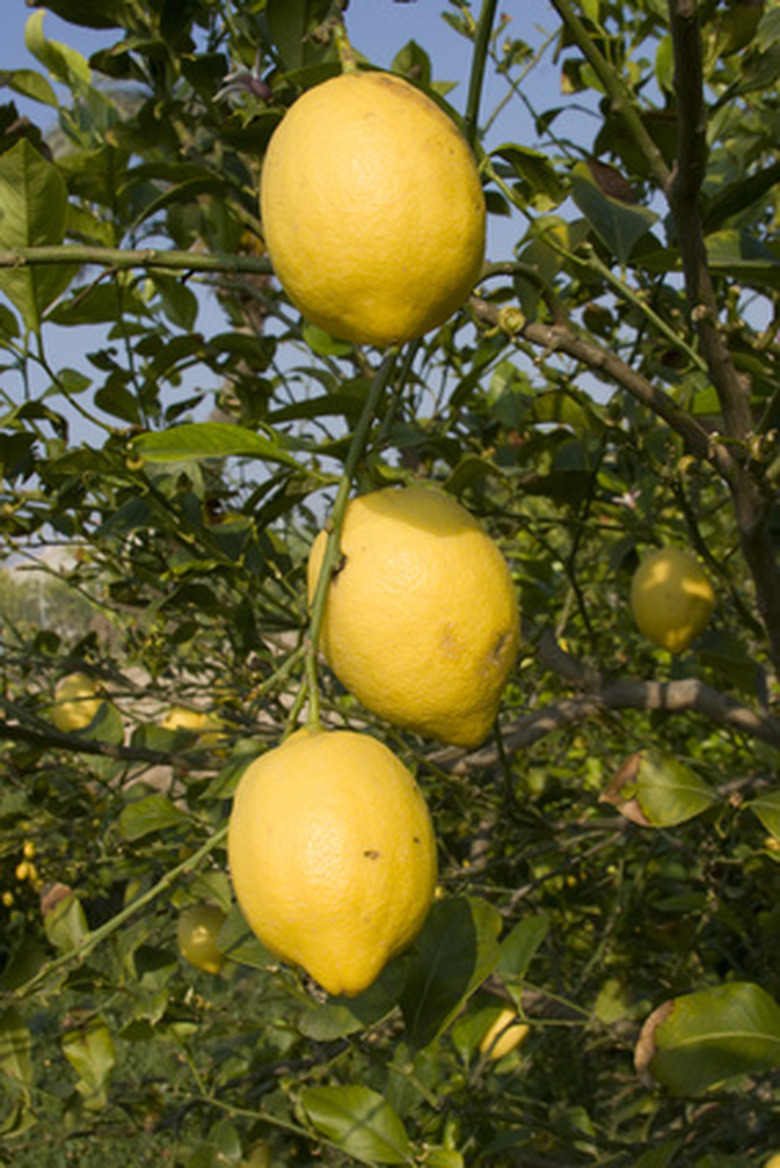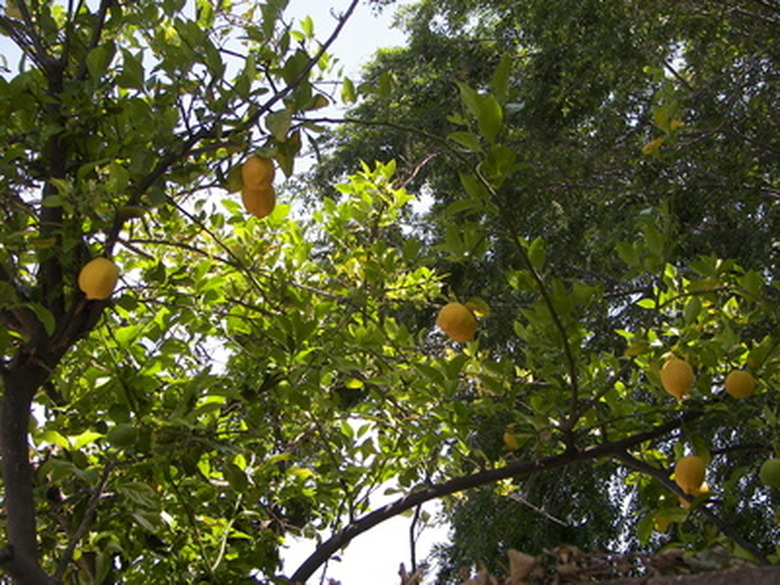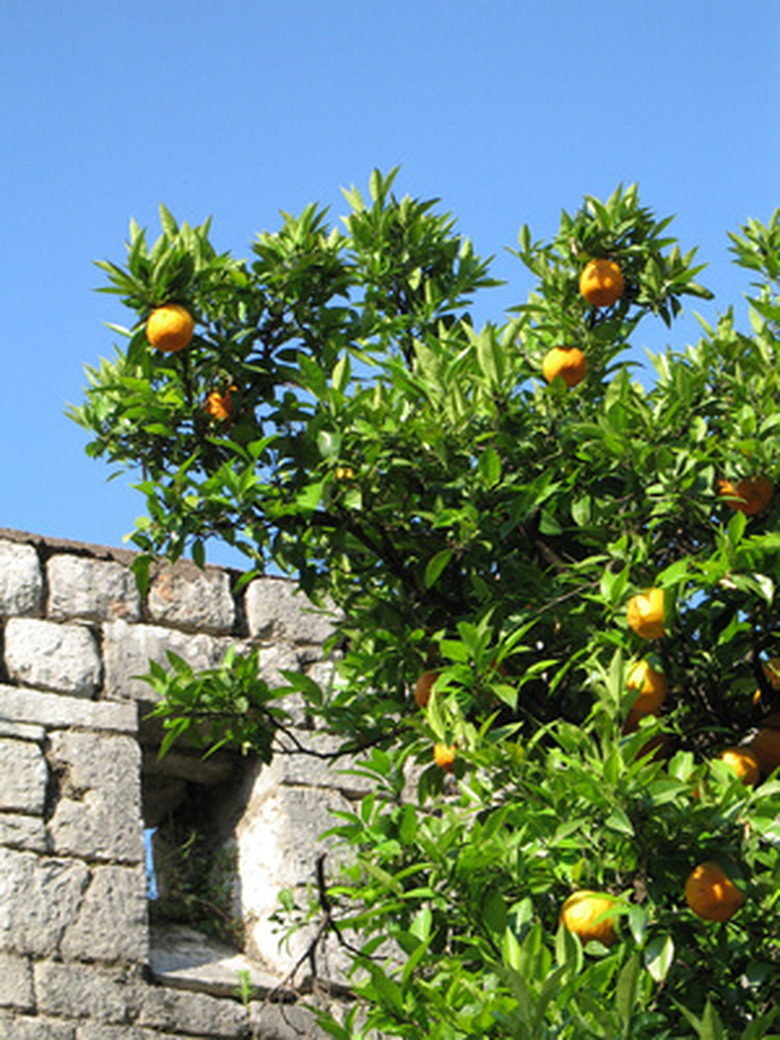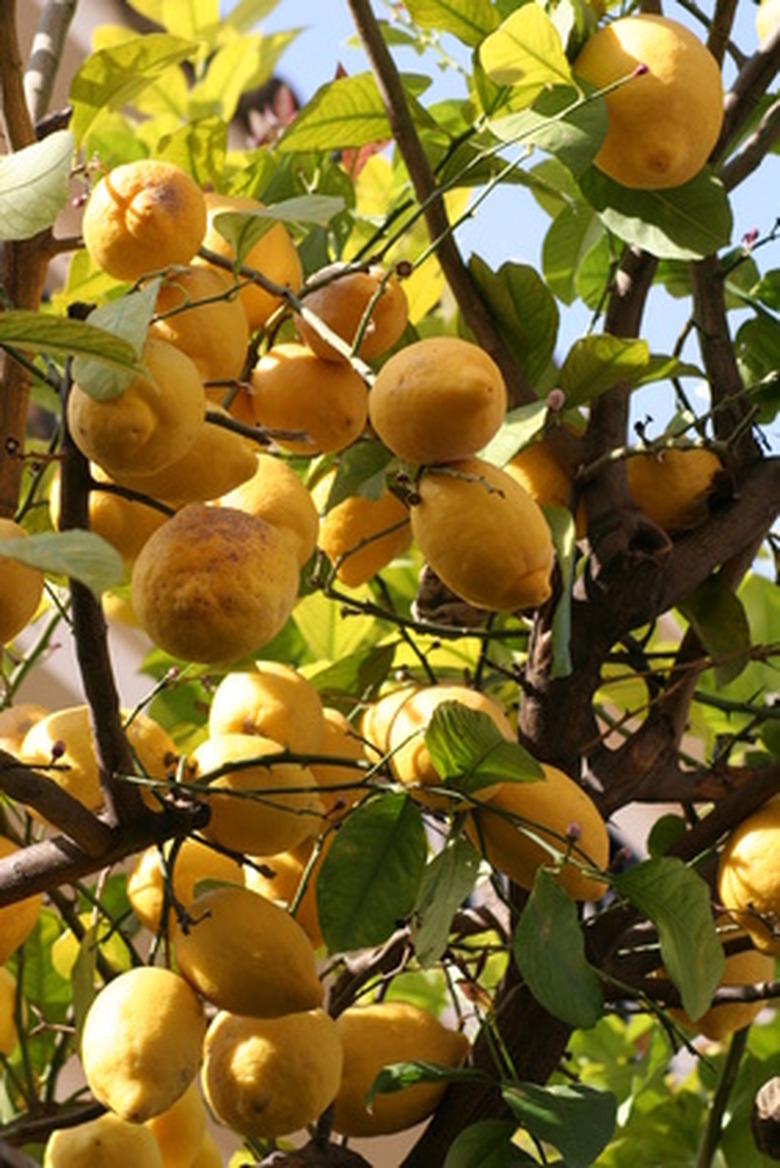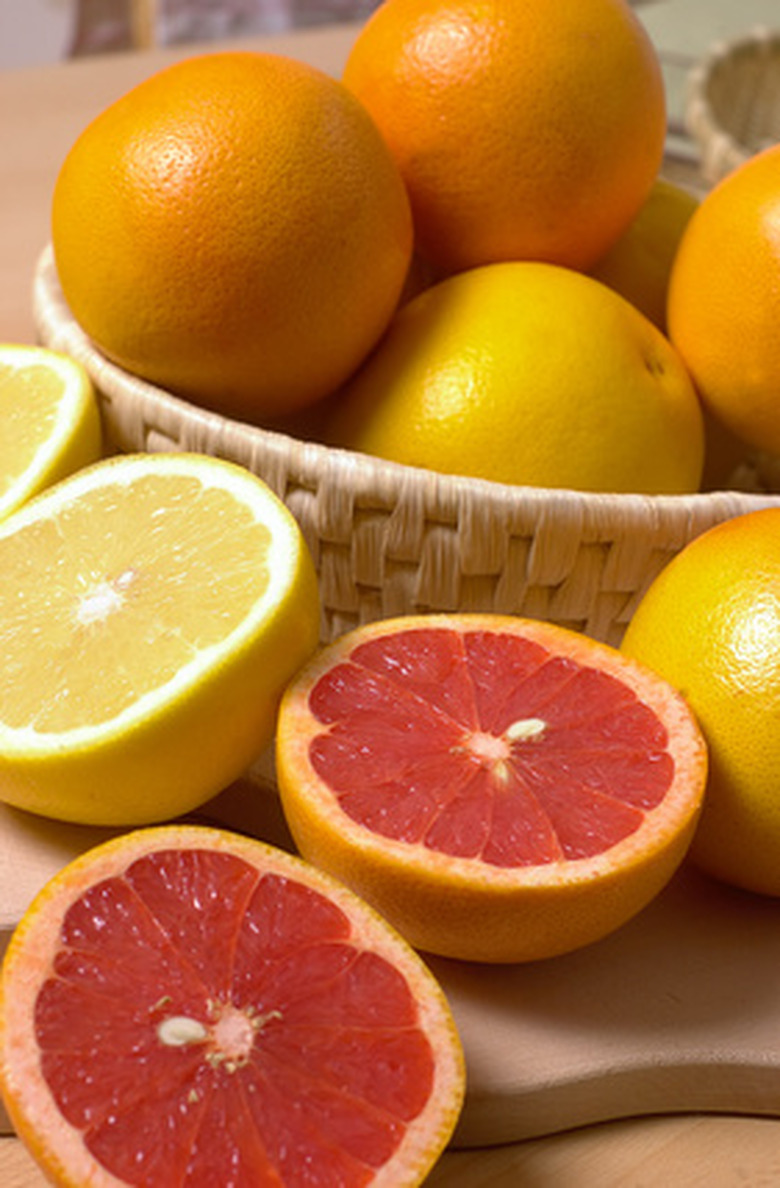Anatomy Of A Citrus Tree
Citrus trees are cultivated in many varieties but are thought to come from only four original species. They originated in tropical and subtropical parts of the world. Citrus are in the botanical family known as Rutacae. The well-known citrus varieties are orange, lemon, lime and grapefruit. Citrus are either dwarfs or standard size trees growing in height from 10 to 20 feet tall, and they are evergreen.
Trunk
The outer bark of the trunk has the role of protecting the tree, and citrus trunks often have thorns for additional protection. The tree trunk's inner bark is called phloem and is where the tree's food flows. Between the inner bark and the sapwood there is a single layer of living cells, called cambium. The sapwood is made of layers that continually form from the core of the tree. Water and nutrients are carried in this layer. The tree's core is called heartwood, and it consists of the very strong, dead tissue that supports the tree.
- Citrus trees are cultivated in many varieties but are thought to come from only four original species.
- The sapwood is made of layers that continually form from the core of the tree.
Branches
Branches are the woody part of the tree which grows from the main trunk. Small branches are known as twigs and large ones boughs. Some varieties of citrus have thorny branches. Citrus fruit growing on branches may be in all stages of maturity at one time, from flowers to ripe fruit. Branches may become so fruit laden that they crack off.
Canopy
The spread of the tree's branches and leaves is called a canopy. Citrus do not lose their leaves in winter. The upper part of a citrus tree may often be of a different species than the root of the tree, due to grafting. The canopy blooms and produces citrus fruit from the branches. Citrus trees grow from 15 to 20 feet in height. For commercial production, the canopy may be pruned to a straight side for easier harvesting.
- Branches are the woody part of the tree which grows from the main trunk.
- The upper part of a citrus tree may often be of a different species than the root of the tree, due to grafting.
Roots
Citrus trees are often grafted combinations of strong "rootstock" with good fruit-producing stock. Roots receive nutrients and water from the soil. They grow from 6 to 24 inches below the soil surface. Citrus roots extend twice as far in diameter as the length from trunk to branch tip. Feeder roots are small and grow upward where minerals, water and oxygen are plentiful. Feeders die and are replaced, while large roots are perennial.
Fruit
The outermost layer of citrus fruit is called the flavedo. This is where the fruit's essential oils are found. The pithy white layer just inside is the albedo. The mesocarp is the middle portion of the fruit which is eaten. Citrus branches begin to form buds and flowers in the early winter. It takes from 5 to 18 months for fruit to develop from flowers. Most flowers fall off without becoming fruit.
- Citrus trees are often grafted combinations of strong "rootstock" with good fruit-producing stock.
- Feeder roots are small and grow upward where minerals, water and oxygen are plentiful.
